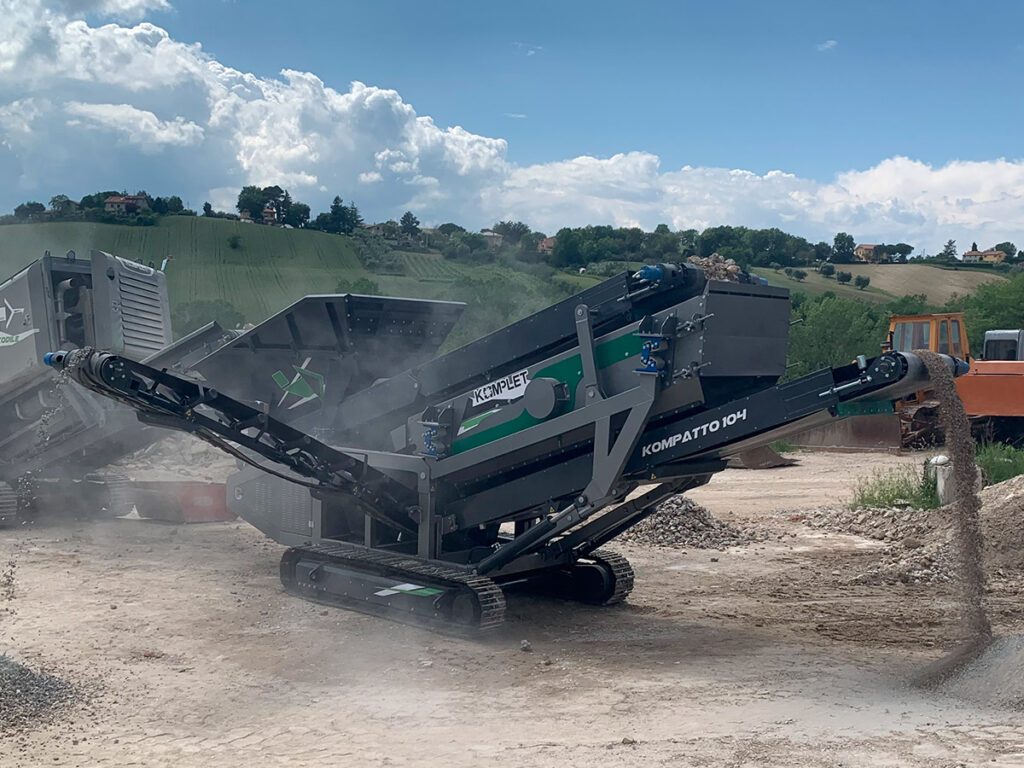Have you ever questioned how mountains of boulders transform into neatly sorted piles of gravel, sand, and dust?
The answer lies in the tireless workhorses of the construction and aggregate industry:
Rock Screeners. These impressive machines act as giant sieves, separating different-sized materials with impressive efficiency.
But how exactly do they achieve this feat? Let’s delve into the inner workings of a rock screener:
The Basic Principle:
At its core, a rock screener operates on the simple principle of size differentiation. Imagine shaking a colander filled with gravel and sand.
The larger rocks stay on top, while the smaller sand grains fall through the holes. Rock screeners employ the same principle but on a much grander scale.

The Anatomy of a Screener:
The main components of a rock screener include:
- Feeder: This hopper feeds the raw material onto the screen decks.
- Screen Decks: These are typically inclined, vibrating mesh surfaces with varying hole sizes. Each deck sorts materials based on their size, allowing smaller pieces to fall through while larger ones remain on top.
Multiple decks can be stacked to create multiple-size fractions.
- Vibrator: This mechanism creates vibrations that shake the material on the screen decks, facilitating easier movement and separation.
- Conveyor Belts: These transport the sorted materials to designated collection points.

The Magic Happens:
Here’s how the process unfolds:
- Raw material is fed into the hopper and onto the top deck of the screener.
- The vibrator creates controlled vibrations that move the material across the screen deck.
- Smaller pieces that fit through the mesh holes fall onto the next deck (if present), further separating by size.
- Larger pieces remain on the top deck and eventually reach the discharge chute.
- Conveyor belts carry the sorted materials to their designated collection points.
Different Strokes for Different Folks:
There are various types of rock screeners, each suited for specific applications:
- Vibrating Screeners: These are the most common, using controlled vibrations for efficient sorting.
- Trommel Screens: These rotate like giant drums, tumbling and sifting the material through internal screens.
- Grizzly Screeners: These feature heavy-duty bars to remove large debris before further processing.

Beyond the Basics:
Modern rock screeners are equipped with advanced features like:
- Adjustable screen angles: For fine-tuning the sorting process based on material and desired size.
- Spray bars: To control dust and maintain optimal screening conditions.
- Feed rate control: To ensure consistent material flow and prevent overloading.
The Impact of Rock Screeners:
These powerful machines play a crucial role in various industries:
- Construction: Producing aggregates for roads, buildings, and infrastructure projects.
- Mining: Sorting mined materials for various applications.
- Recycling: Processing construction and demolition debris for reuse.
- Landscaping: Creating decorative gravel, sand, and soil mixes.
So, the next time you see neatly sorted piles of rocks, remember the hardworking rock screener behind the scenes, diligently sifting and sorting to make our world a more built and beautiful place.
Do you have any questions about rock screeners or their applications? Share your thoughts in the comments below!
